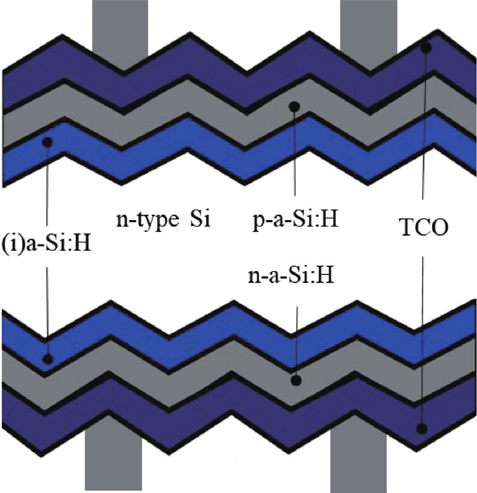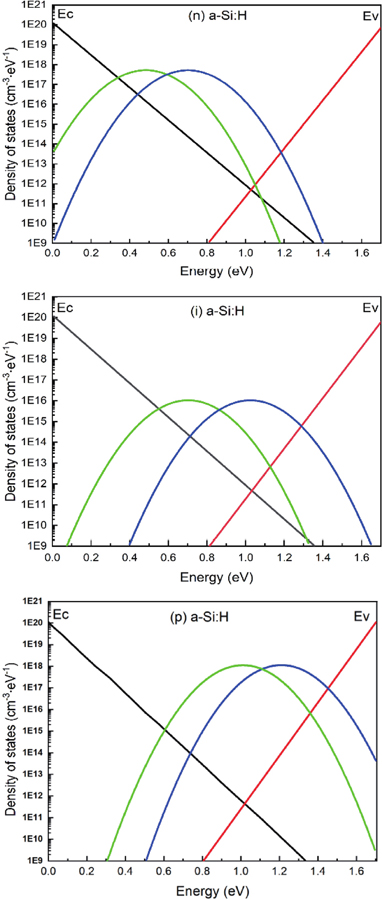Adnan Shariah, Feda Mahasneh. Emitter layer optimization in heterojunction bifacial silicon solar cells[J]. Journal of Semiconductors, 2022, 43(12): 122701
Search by keywords or author
- Journal of Semiconductors
- Vol. 43, Issue 12, 122701 (2022)

Fig. 1. (Color online) Structure of the proposed bifacial HIT solar cell.

Fig. 2. (Color online) Density of states diagram of the emitter layer.
Fig. 3. (Color online) Effect of doping concentration.
Fig. 4. (Color online) Effect of gradient doping concentration.
Fig. 5. (Color online) Variation of emitter thickness.
Fig. 6. (Color online) Effect of electron affinity.
Fig. 7. (Color online) Effect of emitter's band gap energy.
Fig. 8. (Color online) Effect of hole's mobility.
Fig. 9. (Color online) Effect of electron's mobility.
Fig. 10. (Color online) Effect of operation temperature.
Fig. 11. (Color online)J–V curves when the solar cell is illuminated from top side and/or rear side.
|
Table 1. Simulation data used in AFORS.

Set citation alerts for the article
Please enter your email address



